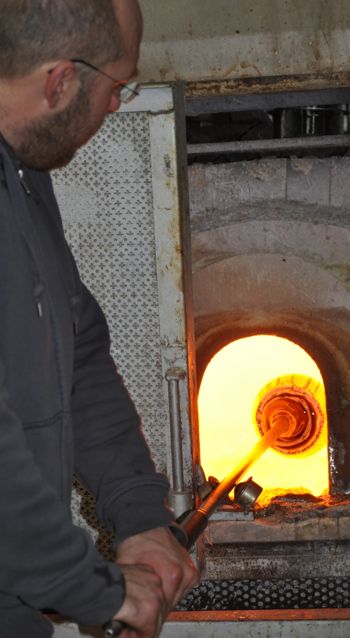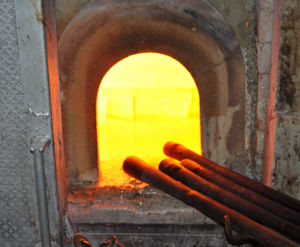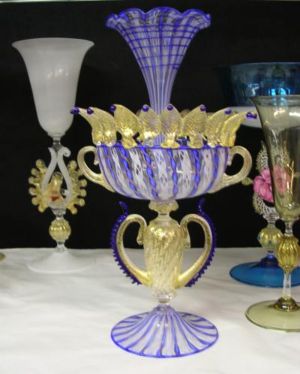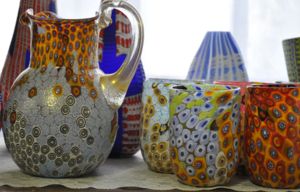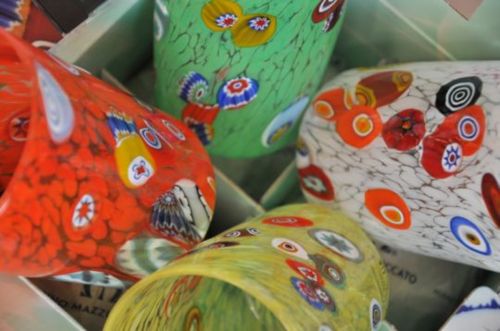The glass colors
Da Venicewiki, il wiki di Venezia
Vitrification process
To lower the melting point of the silica sand, about 1700 °, is added a fudge, soda or potash, which has the ability to lower the melting point to about 800 °. The proportion of the amount of soda in the fusion material is directly proportional to the range of processing within which the glass solidifies. It is said in jargon glass long or short glass in relation to the amount of soda present much in the first case, little in the second.
Glossary
Avventurina: particular type of glass that is obtained with a very unique process which consists of adding to fusion ended certain amount of raw materials, so that the copper can congeal into small lumps and appears shining. Aventurine is better when they are homogeneous throughout the fusion of copper crystals. Dell'avventurina origin is representative the definition that is given by the seventeenth-century glassmaker John Darduin: “la si dimanda Venturina, et con ragione, perché sortisse più da ventura che da scienza”. (Aventurine is called because it is made up of more adventure to science).
Bluino: Light blue is a clear and compact transparent glass in color obtained with the addition of cobalt in the mixture preparation. Particularly suited to the decoration of the classic Murano chandeliers, is often used in the glasses and the pedestals of blown glasses.
Calcedonio: The main mineral for the preparation of chalcedony is the silver, so called for the similarity to a variety of call lasts natural stone chalcedony, the zoned agate. It turns an opaque glass with veins of different colors on a dark background, particularly difficult to prepare for the particular combination of the various minerals that compose it.
Crystal: silica sand with very few mineral intrusions in its composition. Just a few grams of iron oxide to pound sand to give the glass a green color - blue. Even the percentage of soda affects the transparency and gloss of the product glass.
Incalmo: technical approach of different glass colors hot welded together so as to create, a single blown piece with distinct colors. Only few colors can be combined with this technique, because each color has its own cooling characteristics that, of course, must be compatible, otherwise the different voltages would ultimately break the created object.
Lattimo: the lattimo is an opaque white glass, designed to resemble porcelain, when Chinese porcelain began to be marketed in Europe. The soul of the white watermark is in this material. It is obtained opacizzando the glass with tin oxide.
Reticello:it has to be a variant of the watermark. With the barrel filigree formed a network of overlapping reed from which, fused together, they have a peculiar feature: in the reeds intersections a small air bubble remains imprisoned and appears at the center of the wire filigree, giving it a sense of lightness. the glasses made with this technique are very popular, but also the dishes, bottles and cups.
Ruby: it is a very particular color of the wide range of colors producible for the production of transparent glass. The pink color comes from use in the product mix overglaze gold.
Zanfirico: it is a particular technique of processing with which preferably are performed dishes and glasses. It is also a variant of the watermark. In this case, the produced rods are interlaced in various forms up and approached so that you can have blown glasses that depart from the center to the outside as cloves.
